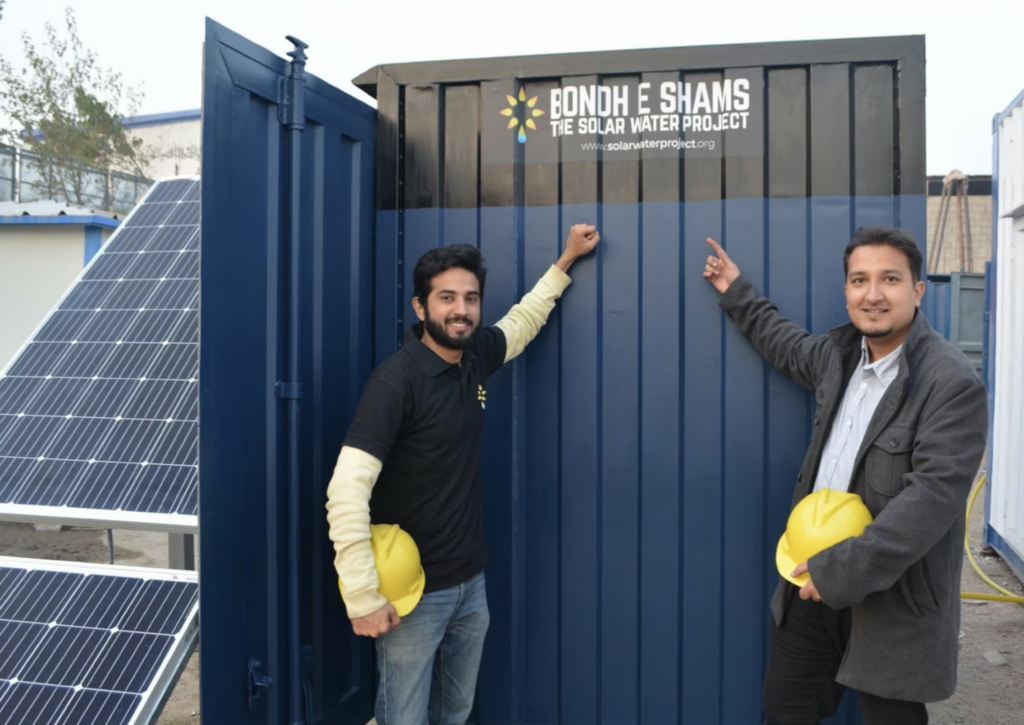What does climate change have to do with your health? The health of Earth’s climate and environment is directly linked to the health of human beings. We are not separate from nature– we depend on clean air and clean water for survival, and climate change is jeopardizing our access to these essential resources.
Most, if not all, climate impacts deal a heavy blow to public health, whether it is through air pollution, extreme weather events, heat-related illness, vector-borne diseases, or food & housing insecurity caused by climate disasters. While the effects of climate change on public health are numerous, this blog focuses on waterborne disease, air pollution, and eco-anxiety, as particular points of focus for 2023.
Largely due to fossil fuel dependence, air pollution remains the leading cause of environmental-related illness and death. Roughly 40% percent of the world’s population still lack access to proper water sanitation, and are exposed to even more waterborne diseases when severe flooding occurs as a result of climate change. Eco-anxiety is on the rise, especially among young people, who fear for their future in an increasingly climate-volatile world.
Let’s examine the details of these public health threats, and explore solutions that can offer us hope.
1. Waterborne Disease
In a previous blog, we highlighted Pakistan’s monster monsoon climate disaster of summer 2022 and the ensuing loss of lives, homes, and livelihoods. Death, injury, and trauma alone are glaring examples of how climate change impacts public health– but perhaps less obvious is the spike in waterborne disease that can come as a result of a major flooding event like the one in Pakistan.
As Pakistanis evacuated the flooded areas and came together at evacuation sites, the crowds overwhelmed waste disposal systems, and all the contaminated water quickly bred and spread diseases such as cholera, diarrhea, viral hepatitis, and infections of the skin and eyes. In addition to these waterborne diseases, there were also outbreaks of malaria and dengue fever. While malaria and dengue fever are vector-borne diseases, they were allowed to proliferate because of the hazardous water conditions post-flood.

Malaria and dengue fever are pathogens carried by mosquitoes, primarily in the tropics and subtropics. Floods create the perfect breeding grounds for mosquitoes because they lay their eggs in water, and can lay up to 100 eggs at a time. It takes only a small amount of stagnant water for this to happen, and after a flood, mosquitoes have an overabundance of habitat and stagnant water in which to reproduce. Pakistan recorded about 1,000,000 more cases of malaria in 2022 than 2021, with a particular surge in areas most impacted by the flood. A similar trend was observed with dengue fever.
Many low-income, Global South countries like Pakistan lack sufficient resources to effectively recover from the aftermath of climate disasters– much less prepare for them. Humanitarian aid from richer nations or international NGOs can often be unreliable, and disaster preparedness is just as, if not more, important. Waterborne diseases will continue to break out as the climate continues to warm and bring more floods. So early warning technology is critical, as is investment in adequate infrastructure for flood management and water sanitation.
The finances required for this infrastructure (and the public health system in general) can be scarce amongst the countries most affected by climate change. Initiatives like loss and damage finance, as discussed at COP 27, are meant to help vulnerable communities build resilience to climate impacts like these. But after decades of false promises, L&D is still not yet a reality. Many Pakistanis depend on charitable efforts like “Oasis Boxes”, which have provided clean water to thousands of people affected by the flood (and, as a plus, are powered by solar).

Pakistani academics, community advocates, government partners, and others are working to bolster the nation’s water infrastructure with renewed urgency after the devastating flood last year. Highlighted measures include implementing water quality standards and testing; scientific, technological, and entrepreneurial assistance; and public awareness campaigns on hygiene practices such as hand-washing and proper water storage.
2. Air Pollution
Besides waterborne disease, air pollution is the primary cause of premature death (in terms of environmental factors). The link between air pollution and climate change is a vicious cycle: the climate is changing because of fossil fuel emissions, which pollute the air with excess carbon dioxide and other heat-trapping gasses; in turn, hotter and drier climate extremes trigger more frequent forest fires, smog, and bad air quality.
The World Bank reports that aerosols (i.e. fine particulate matter in the air) cause over six million deaths every year by triggering diseases such as heart disease, lung cancer, stroke, pneumonia, and many more. An overwhelming 95% of these deaths are in developing regions of the world, calling our attention once again to the urgent issue of climate justice. One in three countries worldwide do not have outdoor air quality standards, and many of those who do fail to enforce them.
Nigeria, for example, has laws on air quality standards, yet in the oil-rich city of Port Harcourt, people have had to deal with air pollution from oil bunkering for many years. The dark soot in the air is at times so thick that it blocks out sunlight, and has resulted in hundreds of thousands of respiratory diseases, amongst numerous other health impacts.

The African continent as a whole receives 36 times more investment into fossil fuel projects than to air quality projects. However, pressure is building to tackle air pollution in Africa through C40, a global coalition of cities working towards achieving WHO air quality standards. Ten major cities in Africa joined the initiative last year at the 9th Africities Summit in Kenya.
It’s also important to remember that air pollution doesn’t just occur outside. In fact, indoor air pollution is a leading risk factor for premature death, especially in Global South countries. Poorer communities worldwide typically do not have air monitoring systems, or data on air pollution in their local area. The people in these communities are working hard to overcome these challenges. In Rwanda, for example, a project by the University of Rwanda is underway to assess air pollution levels in rural and urban areas of the country, and to develop indoor air quality systems to be used in homes.
Even in a wealthy nation like the United States, air pollution remains a significant public health concern, especially for low-income communities of color. Americans of color are 61% more likely to live in a county with higher air pollution. SpaceshipOne’s partner AirGuardian has provided air quality education, along with free air sensors and air filtration devices, to communities in California’s Central Valley, an area that tends to trap air pollution due to its geography as well as industrial agricultural activity. AirGuardian is currently preparing workshops on DIY air sensors and filters, which will pilot in Stockton, CA, and soon expand to other communities in need.

One of the most obvious ways to improve air quality, in general, is to ramp up the transition from fossil fuels to 100% clean, renewable energy. Nuclear energy is one such technology with the power to save lives by replacing fossil fuel energy and preventing the air pollution it causes. Innovations in transportation can also give us healthier air; for example, GRID Alternatives is working to introduce more solar-powered electric vehicles, charging infrastructure, bikes, public transit, and more.
3. Eco-Anxiety
The impacts of climate change on public health go beyond physical health. A less acknowledged but equally concerning impact is the effect it has on our mental health, in the form of eco-anxiety, which tends to be especially prevalent among Gen Z.
What exactly is eco-anxiety? It can range from an occasional feeling of worry or fear (e.g. upon seeing a climate disaster in the news) to chronic emotional and mental stress (e.g. from experiencing a climate disaster personally), and may even cause a decline in physical health. As a result of climate change, we experience a lot of loss; grasping the extent of that loss and the way it impacts us could be the subject of another blog post entirely.
There are many ways that people deal with experiences of eco-anxiety. Sometimes, the simple act of spending time in nature can help us feel better by reminding us of all that we still have left to enjoy, appreciate, and protect. Today’s world is increasingly indoors, behind walls and behind screens. Studies show that 10-20 minutes of daily interaction with nature goes a long way in reducing mental health strains and their physiological effects.

Another way to alleviate eco-anxiety is by taking informed action as part of climate and environmental initiatives. When people are confronted with the harsh realities of climate change and environmental degradation, they may overestimate the role the individual plays in creating the problem, or underestimate the capacity of the individual to help solve the problem, or both– either way, this line of thinking can cause intense eco-anxiety.
When we acknowledge that the main drivers of climate & ecological collapse are corporate greed, government corruption, and Global North overconsumption, we can see that the average person is not to blame. But this does not mean we have no role to play. In fact, we have the most important role to play. If the most powerful institutions are not doing something about the climate crisis, then who will?
One of the most effective ways to overcome eco-anxiety is to harness that emotional energy and use it to take empowered action– for example, by joining a community-based climate solutions initiative. Check out our previous blog on NGO climate action to learn more.
